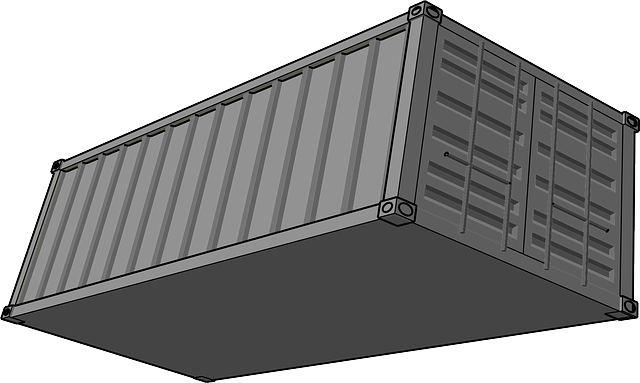California Car Registration: Step-by-Step Guide to DMV VIN Verification
Registering a car in California involves understanding specific requirements and gathering essential documents. This comprehensive guide walks you through the entire process, from preparing your vehic…….

Registering a car in California involves understanding specific requirements and gathering essential documents. This comprehensive guide walks you through the entire process, from preparing your vehicle for inspection and title transfer to completing the DMV registration step-by-step. We’ll also cover post-registration maintenance tips to keep your California vehicle records up-to-date. Ensure a smooth experience with our detailed instructions, including crucial aspects like dmv vin verification.
- Understand the Requirements for Car Registration in California
- Gather Necessary Documents for DMV VIN Verification
- Prepare Your Vehicle for Inspection and Title Transfer
- Complete the DMV Registration Process Step-by-Step
- Post-Registration: Maintaining Your California Vehicle Records
Understand the Requirements for Car Registration in California

Before registering your car in California, it’s crucial to understand the state’s specific requirements. One essential step is the DMV VIN verification process, which ensures that your vehicle meets safety and emissions standards. This involves a thorough inspection of your car’s unique Vehicle Identification Number (VIN) data. The process includes checking for any outstanding recalls or issues related to safety and environmental protection.
Additionally, you’ll need to ensure that your vehicle is eligible for registration, possess the necessary documentation like proof of insurance, and pay the required fees. A mobile VIN inspection or verifier can be a convenient option, allowing you to complete this crucial step efficiently by providing on-site verification of your vehicle’s history.
Gather Necessary Documents for DMV VIN Verification

To register your car in California, one crucial step is preparing all the essential documents for DMV VIN (Vehicle Identification Number) verification. This process ensures that your vehicle meets safety and legal standards before it hits the roads. Gather the following items to streamline this process: a valid driver’s license or state-issued ID, proof of insurance, the title or lease agreement of the vehicle, and registration forms from the California DMV. Additionally, you’ll need the Vehicle Identification Number (VIN) located on the vehicle’s chassis.
For convenience, many residents opt for a mobile VIN inspection or verification service. These services send a professional to your location to perform the VIN check using specialized tools, eliminating the need to visit a DMV office. This option is especially beneficial for those with busy schedules or individuals who require immediate results. With a mobile vin verifier, you can save time and ensure your car registration goes smoothly.
Prepare Your Vehicle for Inspection and Title Transfer

Before heading to the DMV for registration, ensure your vehicle is ready through a thorough preparation process. This involves gathering all necessary documents, including proof of insurance and ownership, as well as completing any outstanding title transfers. A crucial step in this process is the DMV’s vin verification, which ensures the vehicle’s identity and history are accurate.
For added convenience, many services now offer mobile vin inspection and verification, streamlining the process further. This method allows you to complete these requirements from the comfort of your home or location of choice, making registration smoother. By addressing these steps proactively, you’ll have a seamless experience when registering your car with California’s DMV.
Complete the DMV Registration Process Step-by-Step

Completing the DMV registration process is straightforward if you follow these steps. First, gather all required documents including your vehicle’s registration papers, proof of insurance, and identification. Visit a nearby California DMV office or use their online services for faster processing. During the submission, you’ll be asked to provide detailed information about your vehicle, including its make, model, year, and color. The key step here is performing a DMV VIN verification, where they cross-check your vehicle’s unique identifier (VIN) with their records to ensure authenticity and history.
After the initial submission, expect further instructions regarding a possible mobile vin inspection or alternative forms of verification. This ensures that your car meets all safety standards and legal requirements. Once approved, you’ll receive your registration documents and license plates, making your vehicle officially registered in California.
Post-Registration: Maintaining Your California Vehicle Records

After successfully registering your vehicle with the California Department of Motor Vehicles (DMV), it’s crucial to maintain accurate and up-to-date records for both legal and safety reasons. This includes keeping track of important documents, such as registration certificates and proof of insurance, in a secure location. Regularly inspecting and documenting your vehicle’s condition is also vital. This involves routine maintenance checks, like ensuring the tire pressure and oil levels are correct, as well as addressing any issues promptly to prevent further complications.
One efficient method to maintain these records is through a mobile vin inspection or verification service. These services allow you to easily and conveniently verify your vehicle’s identity using the unique 17-digit Vehicle Identification Number (VIN). By leveraging technology for this process, known as dmv vin verification, you can stay organized, reduce paperwork, and ensure that all your California vehicle records are current with the DMV.
Registering a car in California involves understanding specific requirements, gathering essential documents for DMV VIN verification, preparing your vehicle for inspection and title transfer, and completing a step-by-step registration process. Once registered, it’s crucial to maintain accurate vehicle records. By following these steps and adhering to the necessary procedures, you’ll ensure a smooth and efficient car registration experience in the Golden State.







